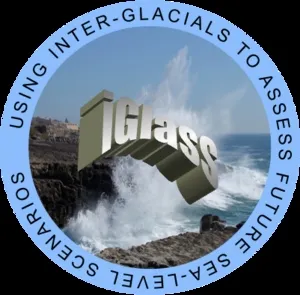
A major Southampton-led consortium project to study past and possible future sea-level rise has received a major grant award of £3.3 million over five years from the UK’s Natural Environment Research Council (NERC).
“The vulnerability of extensive near-coastal habitation, infrastructure, and trade makes global sea-level rise a major concern for society,” said project coordinator Professor Eelco Rohling of the University of Southampton’s School of Ocean and Earth Science (SOES) based at the National Oceanography Centre, Southampton. “By studying how sea level responded during the warmer periods between ice ages, we hope to obtain a better picture of how much and how quickly sea level may rise as a result of global warming.”
The UK coastline has around £150 billion of assets at risk from coastal flooding, of which £75 billion is in London alone. Consequently, most nations have developed and implemented protection plans, which commonly use ranges of sea-level rise estimates from global warming scenarios such as those published by the Intergovernmental Panel on Climate Change (IPCC), supplemented by worst-case values from limited geological studies.
The UK Climate Projections (UKCP09) provides the most up-to-date guidance on UK sea-level rise scenarios and includes a low-probability, high-impact range for maximum UK sea-level rise for use in contingency planning and in considerations regarding the limits to potential adaptation (the H++ scenario). UKCP09 emphasizes that the H++ scenario is unlikely for the next century, but it does introduce significant concerns when planning for longer-term future sea-level rise.
Currently, the range for H++ is set to 0.9–1.9 metres of rise by the end of the 21st century. This range of uncertainty is large (with vast planning and financial implications), and – more critically – it has no robust statistical basis.
“The aim of the new consortium project is to understand better the processes controlling sea-level rise, and, in so doing, put estimates of maximum future sea-level rise on a firmer statistical footing,” said Professor Rohling.
The project will study the response of ice volume/sea level to different climate states during the last five interglacials (the periods between ice ages), which include periods with significantly higher sea level than the present. This will identify the potential of reduced ice cover over Greenland and West Antarctica, an important constraint on future sea-level projections.
“A key outcome will be to place sound limits on the likely ice-volume contribution to maximum sea-level rise scenarios for the end of the next century and beyond,” said Professor Rohling.
The lead researchers in the £3.3 million consortium project are Prof. Eelco Rohling (coordinator, SOES), Prof. Tony Payne and Dr Mark Siddall (University of Bristol), Dr Mark Tamisiea (National Oceanography Centre, Liverpool), Dr Eric Wolff (British Antarctic Survey), Prof. Gideon Henderson (University of Oxford), Prof. Antony Long (Durham University), and Prof. Roland Gehrels (Plymouth University). Associated researchers are Dr Dan Lunt and Dr Joy Singarayer (University of Bristol) and Dr Svetlana Jevrejeva (National Oceanography Centre, Liverpool).
There are two overseas academic partners: Prof. Andrew Roberts, Australia National University, Canberra, Australia, and Dr Glenn Milne, University of Ottawa, Canada
There are three non-academic partners: Willis Limited, the UK Climate Impacts Programme (UKCIP), and the Environment Agency.
Professor Rohling was recently awarded a prestigious Wolfson Research Merit Award by the Royal Society, the UK’s national academy of science.